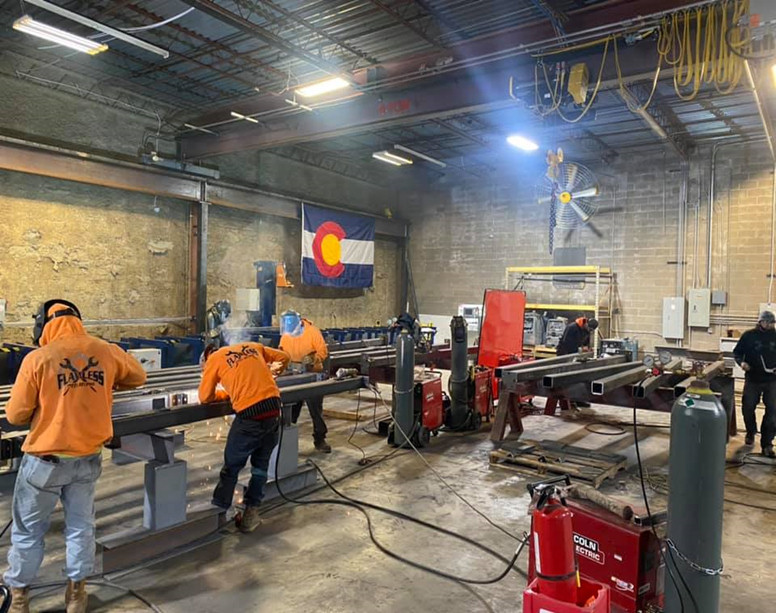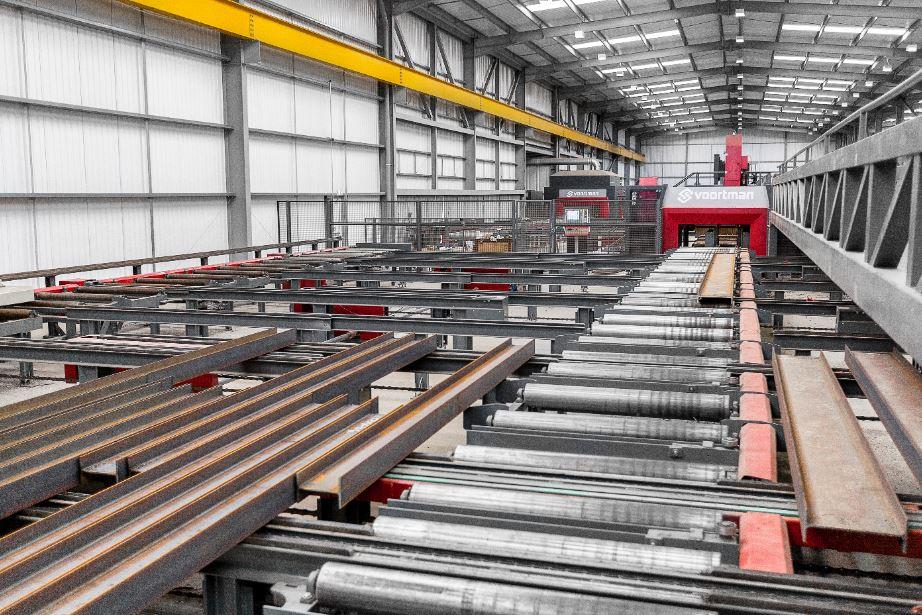Trusted Steel Fixing Solutions: Guaranteeing Architectural Stability
Trusted Steel Fixing Solutions: Guaranteeing Architectural Stability
Blog Article
Comprehensive Analysis of Cutting-Edge Techniques in Steel Manufacture Industry
As the steel construction market continues to advance, the assimilation of innovative techniques has actually ended up being important for remaining affordable and fulfilling the needs of modern-day manufacturing requirements. From laser reducing innovations to the application of robotics and 3D printing in steel manufacturing, the landscape of construction strategies is rapidly changing. With each innovation bringing its very own collection of difficulties and advantages, a thorough analysis of these techniques is critical for business aiming to improve their processes, boost precision, and inevitably, raise the high quality of their steel construction output. In this vibrant industry where technology plays a crucial role, comprehending the nuances of these advanced methods is not simply a choice but a necessity for those seeking to advance in the ever-evolving world of steel manufacture.
Laser Reducing Developments
In the world of steel fabrication, laser cutting advancements have actually changed the precision and performance of metal shaping procedures. By using the power of focused laser beams, manufacturers can currently accomplish unequaled degrees of accuracy when puncturing numerous kinds of steels. This innovation enables elaborate layouts to be executed with minimal product wastage, making it a cost-efficient option for industries requiring high accuracy parts.
One of the crucial benefits of laser cutting is its ability to deal with a vast array of products, including stainless steel, light weight aluminum, and carbon steel, easily. The process produces tidy, burr-free edges, removing the demand for additional finishing actions. Furthermore, the non-contact nature of laser cutting minimizes the threat of material contamination, leading to better final result.
Additionally, laser cutting equipments can be configured to make swift, precise cuts, dramatically decreasing manufacturing time compared to traditional reducing methods. This speed and precision make laser reducing particularly suitable for mass production atmospheres where performance is critical. As innovation continues to breakthrough, laser cutting is poised to play a progressively vital role in the steel manufacture industry.

CNC Machining Innovations
The evolution of CNC machining technologies has actually ushered in a new period of precision and efficiency in the steel manufacture sector. Computer Numerical Control (CNC) equipments have actually reinvented steel manufacture by offering unrivaled accuracy and repeatability in the production procedure. steel fabrication melbourne. One of the essential technologies in CNC machining is the integration of advanced software program systems that allow real-time surveillance and adjustments, bring about improved performance and quality assurance
In addition, the advancement of multi-axis CNC makers has actually enabled the construction of intricate steel elements with detailed layouts that were formerly challenging to produce. These devices can execute a large range of machining operations, consisting of milling, exploration, turning, and grinding, all with high degrees of accuracy.
Additionally, the incorporation of automation and robotics in CNC machining has streamlined manufacturing procedures, minimized lead times, and decreased the margin of mistake. This assimilation of innovative technologies not just boosts performance but also guarantees constant high quality throughout all fabricated steel parts. In conclusion, CNC machining developments remain to drive developments in the steel construction industry, setting brand-new criteria for precision and productivity.
Automated Welding Technologies
Automated welding modern technologies have transformed the steel manufacture market, boosting performance and precision in the welding procedure. These advanced innovations make use of computer-controlled systems to automate the welding procedure, bring about greater performance degrees and improved weld top quality. One of the key benefits of automated welding is the ability to execute complicated welds with constant precision, minimizing the probability of errors and rework.
Robotic welding systems go to the forefront of automated welding innovations, providing unmatched speed and precision. These systems can deal with a variety of welding tasks, from simple to intricate, with ease (steel fabrication melbourne). By using innovative sensing units and software application, robot welders can adjust to variants in material and joint geometry, making certain an attire and dependable weld
In addition, automated welding technologies improve work environment safety by minimizing the direct exposure of human welders to hazardous fumes and intense heat. As the steel manufacture sector remains to advance, integrating automated welding innovations will certainly be important for firms wanting to remain affordable and fulfill the expanding demands for top quality welded products.
Robotics Assimilation in Construction
Utilizing robotic systems in manufacture processes has actually ended up being an essential technique for boosting effectiveness and precision in modern manufacturing settings. Robotics assimilation in steel fabrication supplies a myriad of benefits, including increased performance, enhanced high quality control, and improved safety measures. These innovative robot systems are furnished with advanced sensing units and programs capacities, allowing them to execute detailed tasks with a high degree of precision and repeatability.
One of the key advantages of robotics assimilation in steel manufacture is the ability to automate repeated jobs, such as material handling, reducing, welding, and setting up procedures. This not only speeds up manufacturing cycles however likewise minimizes the danger of human error, leading to greater overall helpful resources item high quality. Furthermore, robotics can run 24/7, dramatically improving manufacturing result and conference limited job target dates.

3D Printing in Steel Production
Having actually changed the steel fabrication industry with robotics integration, the expanding exploration of 3D printing in steel production is poised to further breakthrough the world of modern production strategies. 3D printing, additionally called additive production, provides unprecedented layout freedom and complexity, allowing the creation of intricate steel frameworks that were previously unattainable through typical manufacturing methods. By utilizing computer-aided design (CAD) software program, makers can precisely control the layer-by-layer deposition of steel product, resulting in get rid of improved geometries and performances.
Among the key advantages of 3D printing in steel production is its capacity to reduce product waste significantly. Unlike subtractive production procedures where excess product is trimmed away, 3D printing only utilizes the necessary amount of steel required for the last component. This performance not just results in cost savings yet also straightens with lasting production techniques by minimizing ecological impact.
Additionally, 3D printing allows rapid prototyping and modification, allowing for the manufacturing of small sets of intricate steel parts with brief lead times. As the technology continues to develop and become a lot more available, its assimilation right into mainstream steel construction procedures is expected to drive innovation Full Article and effectiveness across the market.
Conclusion
In final thought, the steel manufacture sector has actually seen significant advancements in strategies such as laser cutting, CNC machining, automated welding, robotics integration, and 3D printing. These advanced technologies have actually transformed the method steel items are manufactured, leading to boosted effectiveness, cost-effectiveness, and precision. Continued investment in these cutting-edge methods is vital for the sector to stay affordable and satisfy the needs of modern production processes.
As the steel construction industry proceeds to progress, the assimilation of advanced strategies has ended up being necessary for staying competitive and satisfying the needs of modern-day manufacturing criteria.One of the crucial benefits of laser cutting is its capability to deal with a vast variety of materials, including stainless steel, light official website weight aluminum, and carbon steel, with ease.Automated welding innovations have revolutionized the steel construction industry, boosting performance and precision in the welding process.Having revolutionized the steel fabrication industry via robotics assimilation, the expanding expedition of 3D printing in steel manufacturing is positioned to further breakthrough the world of modern manufacturing techniques.In verdict, the steel fabrication industry has actually seen significant advancements in methods such as laser cutting, CNC machining, automated welding, robotics combination, and 3D printing.
Report this page